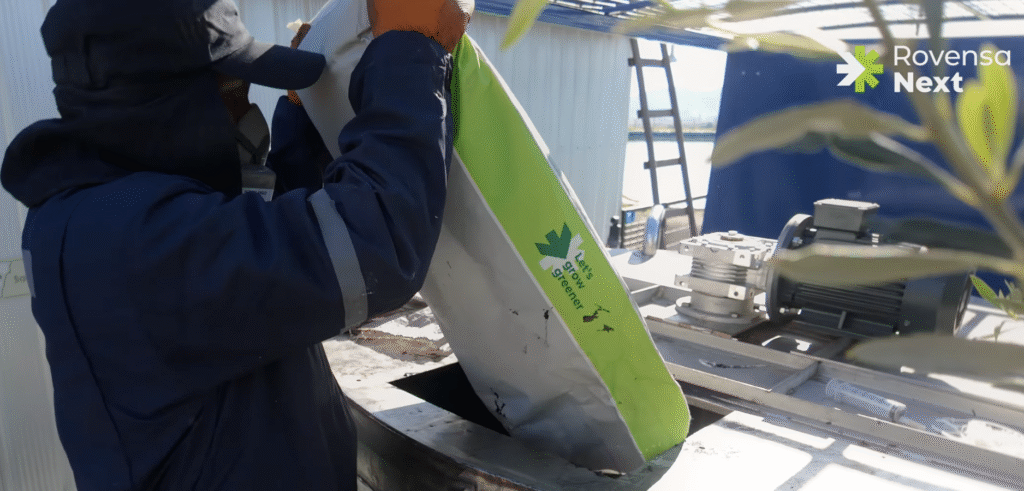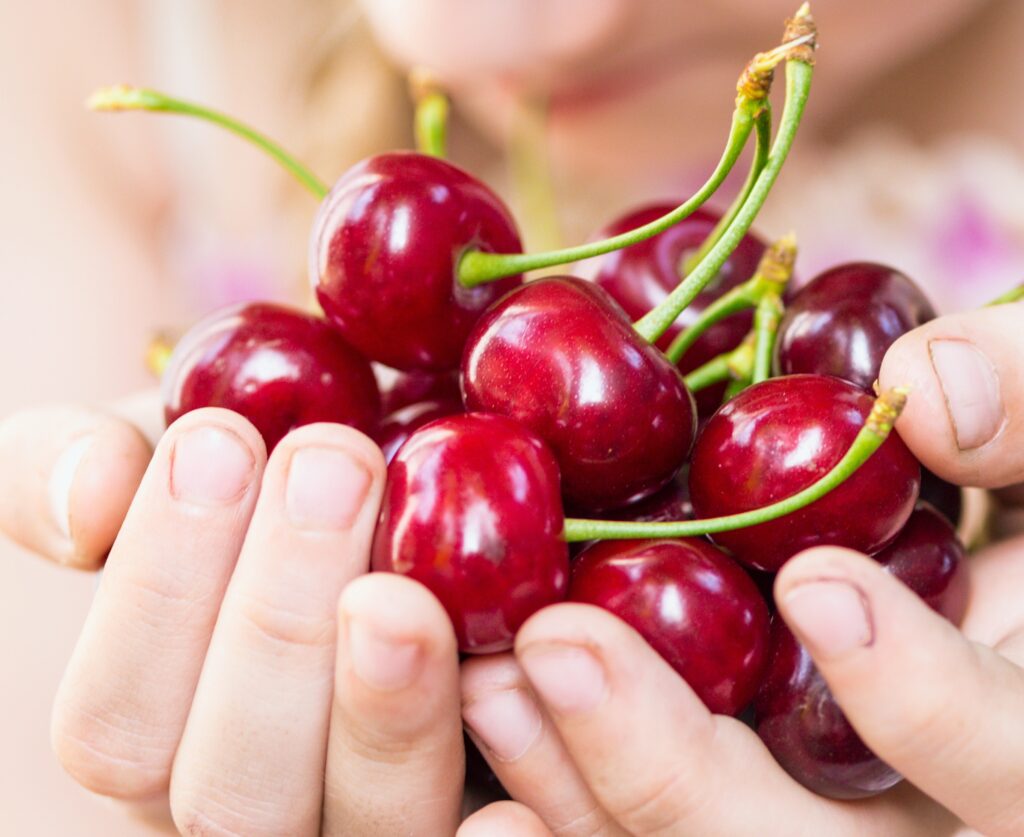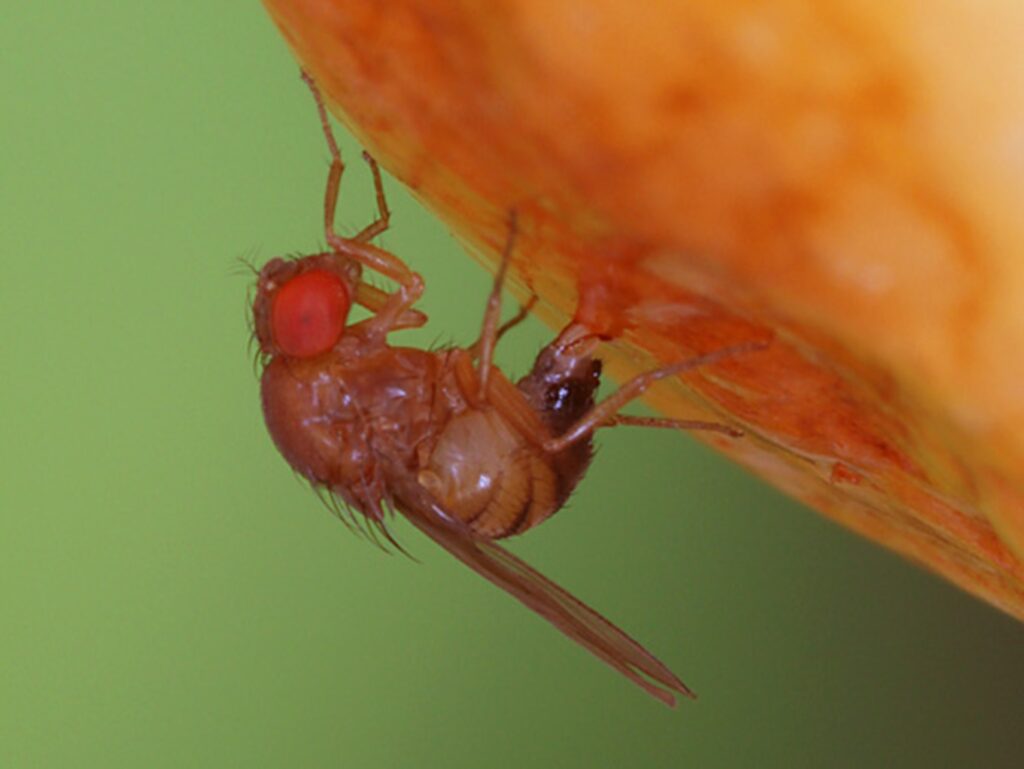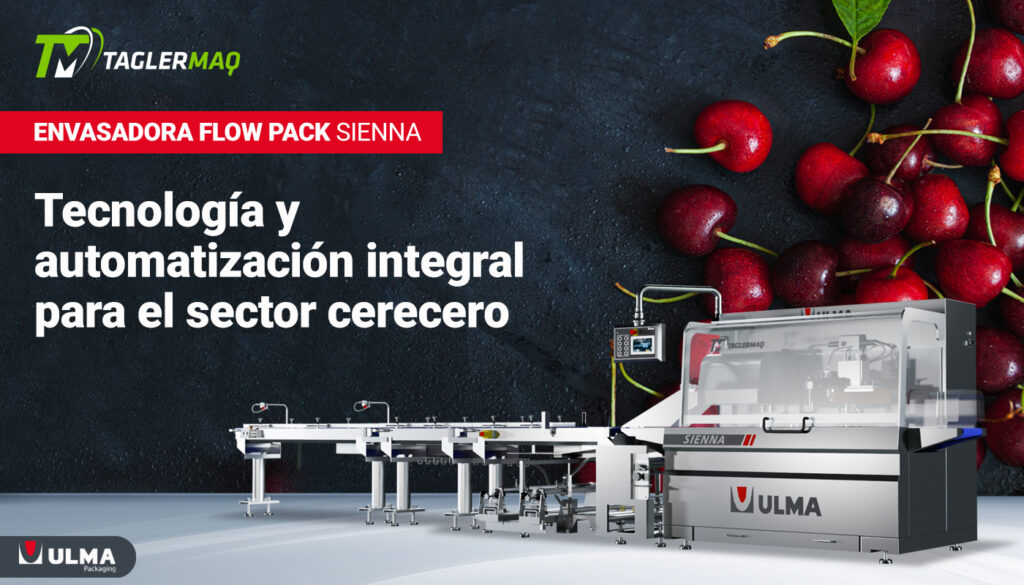By Francisca Barros B, Jessica Rodríguez F, Militza Ivelic K/ Trío Kimün.
In order to maximize the post-harvest potential of cherries for export, at the time of harvest it is necessary to take into account some critical aspects related to: the maturity of the fruit, the scheduling of this work, materials to be used, handling of the fruit, sanitation and safety of the process.
In this article we will go into depth in the analysis of those aspects related to the handling of fruit as well as its sanitation and safety. Regarding the first point, the objective is to control or reduce the incidence of compression and/or impact on the fruit, which cause mechanical damage, known as pitting and bruising. (Image 1), defects that are not immediately visible and you must wait at least 5 days to see them clearly.

When analyzing the fruit handling process, it is extremely important to have adequate organization during the harvest, based on an estimate of kilos per hectare and the harvest window by variety, considering the maturity of the fruit (harvest color at the beginning vs. target harvest color by variety). With this information, the number of people needed to carry out a careful and timely task must be determined.
Subsequently, at the time of beginning the actual harvest, the personnel must be trained in regards to the care that must be taken with the fruit in the orchard, more specifically in how to carry out an adequate harvest. It is important to teach people how to use the materials correctly, this includes ladders, harvesting boxes or buckets; they must also be instructed in how to separate the fruit from the tree, without causing bruises or detachment of pedicels. (image 2).

To avoid mechanical damage, the filling of the harvest box must be done carefully, always taking the fruits from the pedicel. (Image 3)), and gently placing them inside the boxes. Special attention must be paid to the final weight of each box and the height of the fruit inside the box in order to avoid damage caused by compression between the fruit or between the fruit and the pedicels, thereby reducing the levels of fruit for export. A poor harvest can reduce its exportable fruit yield due to mechanical damage with levels of bruises greater than 15%.

Once each box has been filled, it is extremely important to stress to the harvesters that it should not be left on the ground nor should it be exposed to sunlight. To avoid the effects of sunlight, a bin, pallet, or harvest cart should be placed in the shade where the fruit should be covered with wet sponges and a reflective tarp, in order to avoid exposure to high temperatures and low relative humidity. Evaluations carried out at the orchard level show that cherries can lose weight per hour between 0.11 and 0.2% (https://www.copefrut.com/wp-content/themes/copefrut/img/revistas/2019_N2.pdf), when maintained on the premises without seeking to increase the relative humidity of the environment. (Image 4).

Another critical aspect is the sanitation and safety of the harvest, which seeks to avoid possible contamination of the fruit, either with microbiological agents that affect the health of the consumer or the expression or development of phytopathogenic microorganisms.
Regarding the care that must be taken into account to avoid contamination of the fruit with microbiological or phytopathogenic agents, it is important to carry out all the cultural practices associated with reducing the potential of pathogens that can affect the fruit in the orchard.
Proper cleaning and sanitation of collection centers and harvest materials must be carried out.
As the harvest is carried out, the boxes must be covered, Using sponges soaked in a 100 ppm chlorine solution, this material has the purpose, in addition to keeping the fruit and pedicels hydrated, of achieving control over safety when working with chlorine solutions, minimizing the effect of possible cross-contamination of the product.
Likewise, the fruit selection process aims to leave only healthy fruits in export condition inside the harvest box, that is: without wounds, cracks and rot (Image 5). Inadequate selection or lack of selection can reduce the yield of exportable fruit by up to 30% due to the presence of commercial fruit or waste. On the other hand, precautions must be taken to avoid harvesting fruit that is grouped together in groups of more than three or with the woody structure of the spur; this characteristic of the harvest is accompanied by the presence of leaves and remains of plant material (image 6), which dirty the packaging line and prevent proper functioning for correct classification of the product in the process.


Finally, with regard to food safety, having bathrooms and drinking water in the area around the harvest group must be considered to minimize risks and comply with the GAP protocols, which in Chile is carried out through GlobalGap certification. Today, all work carried out at the farm level is of great importance in order to minimize the risks of contamination by COVID 19, whether through people, harvest materials or through fruit. Regarding this topic, ASOEX has published a guide of Good Practices for the prevention of Coronavirus SARS CoV-2 in fields, farm packing and fruit plants.
(https://newsflash.asoex.cl/userfiles/file/0328D_GUIA_COV_ASOEX_Sept%202020.pdf)










